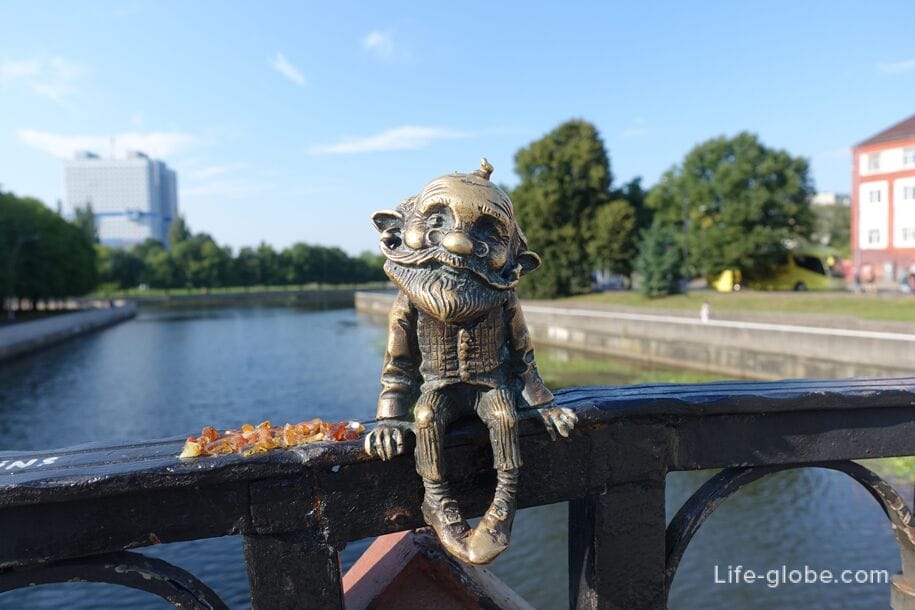
The Cathedral in Kaliningrad or the Dome Cathedral of Our Lady and St. Adalbert (German name Konigsberger Dom - Konigsberg Cathedral) is the main cultural and historical place of Kaliningrad.
The first mention of the Cathedral refers us to 1333, it is this date (September 13, 1333) that is considered to be the "Birthday" of the cathedral. Formally, the date of completion of the cathedral is considered to be 1380, but the work carried out in the cathedral continued later.
Before the beginning of the church reformation of the 16th century, the cathedral was the main Catholic church of Konigsberg, it was dedicated to the Highly Consecrated Body of Jesus Christ, the Virgin Mary, All Saints and Saint Adalbert. Also, during its rich history, the cathedral was the Lutheran church of Prussia.
After the Second World War, the cathedral building became ruins, which remained until the 1990s, when work began on the restoration of the cathedral.
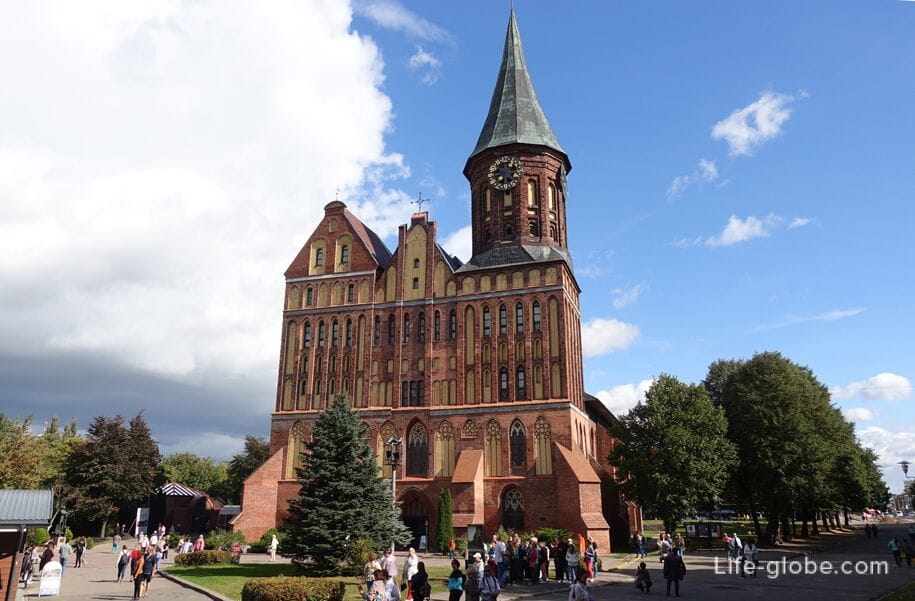
Currently, the Cathedral is the hallmark of the city of Kaliningrad. The image of this monumental building can be seen in advertising brochures, postcards, key rings, mugs and other souvenirs.
The Cathedral is located in the heart of the city, on the island of Kanta, being the dominant of the island.
Perhaps no tourist visiting Kaliningrad can bypass the cathedral, because in addition to the attention-grabbing architecture - the style of brick (Baltic) Gothic, the cathedral attracts with its interior decoration.
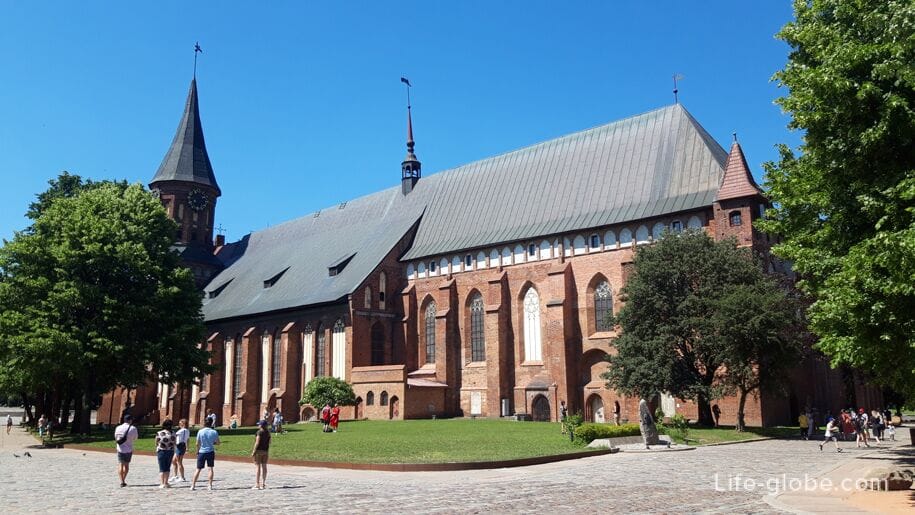
Currently, the Cathedral is not used for its intended purpose, now it is a multifunctional cultural center, a venue for festivals, concerts and all kinds of significant events in the city.
On a permanent basis, the cathedral has a concert hall, an altar space, a museum exposition and two chapels.
The main hall of the Cathedral is one of the most exquisite and visited places in the cathedral.
In this hall there is a unique organ complex of its kind, consisting of two organs - a large and a small choir. In this connection, the hall is called "Organ".
The organs of the cathedral are mechanical instruments with the addition of electronics, made by the German organ-building company "Alexander Schuke".
The large organ was installed in the cathedral in 2008 and is currently the largest organ in Russia.
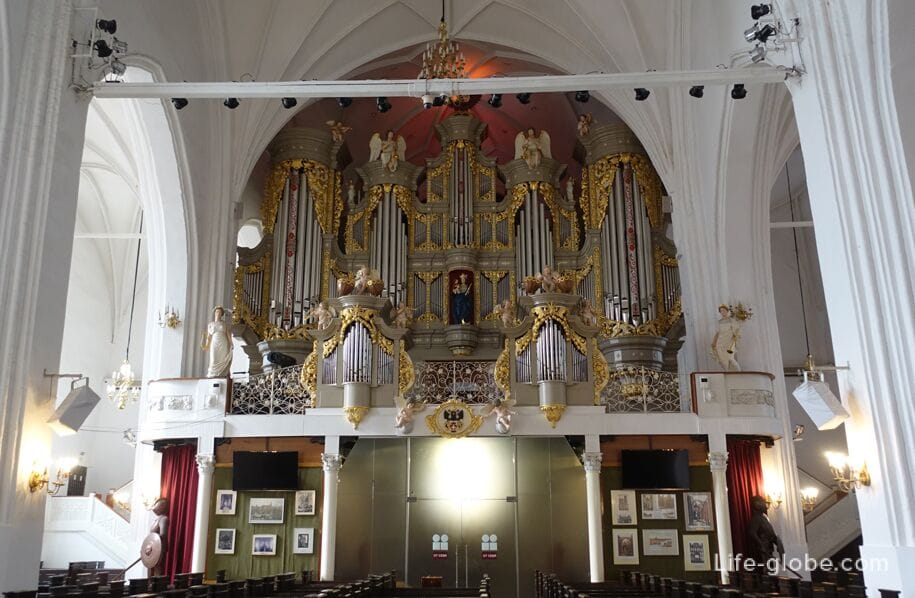
Photo of a small organ
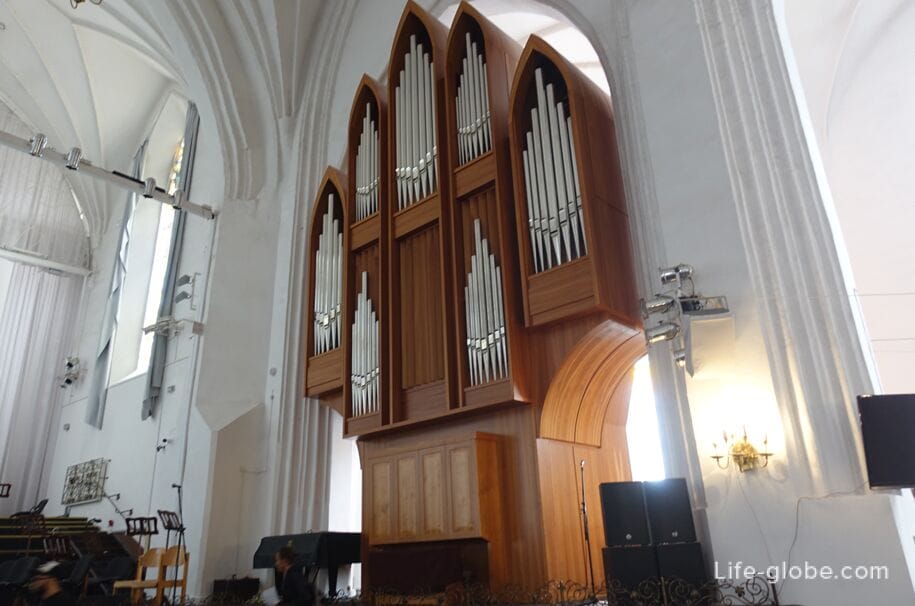
The organ hall hosts: daily daytime organ mini-concerts (duration 40 minutes); evening concerts once or twice a week, where leading Russian and European musicians play.
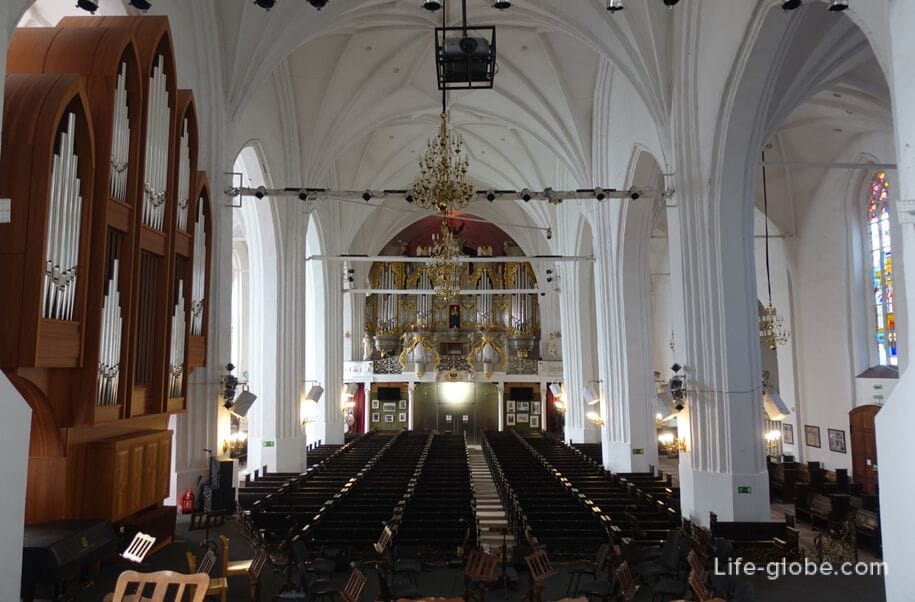
In addition to the organs in the cathedral hall , you can see:
- historical relic - Baptismal cup-font. It is believed that the chalice appeared in Konigsberg, before 1350 (the exact date is unknown), and before getting into the cathedral, it was in the Altstadt church, where the bishop's pulpit was located at that time.
The font is made in Romanesque style, has a height of 113 centimeters, the material is limestone. The octagonal bowl is placed on a three-dimensional pedestal. All sides of the support and the bowl have convex drawings and symbolic aspects;
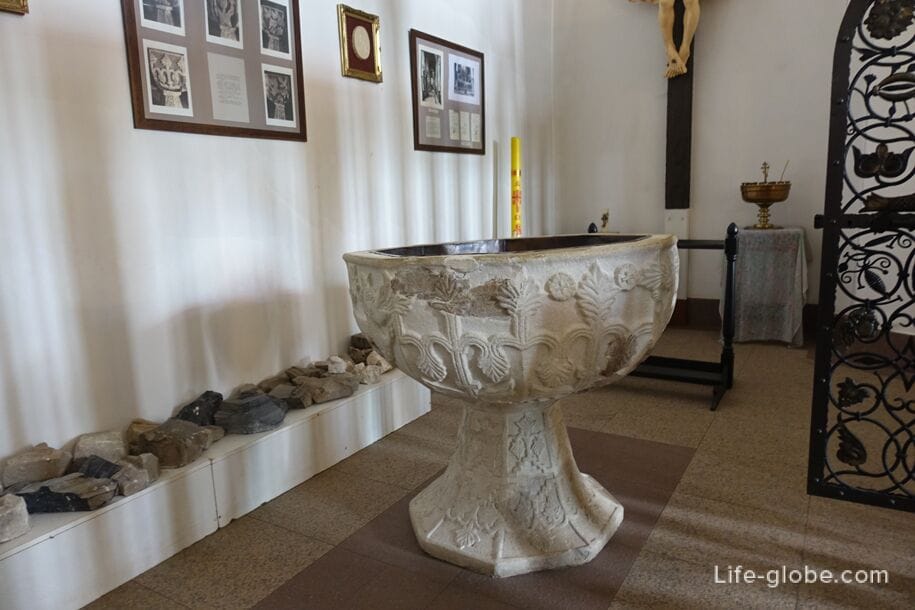
- stained glass window with Masonic symbols;
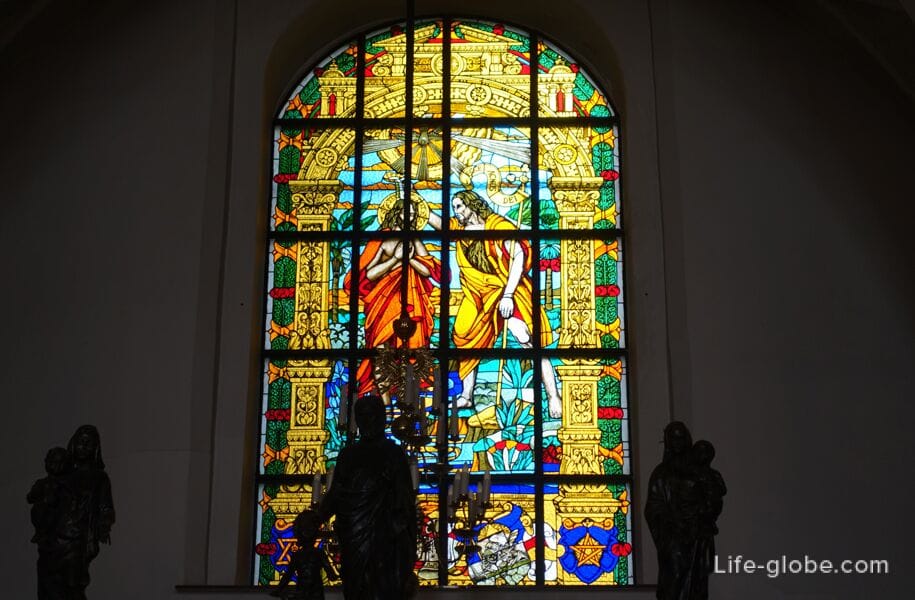
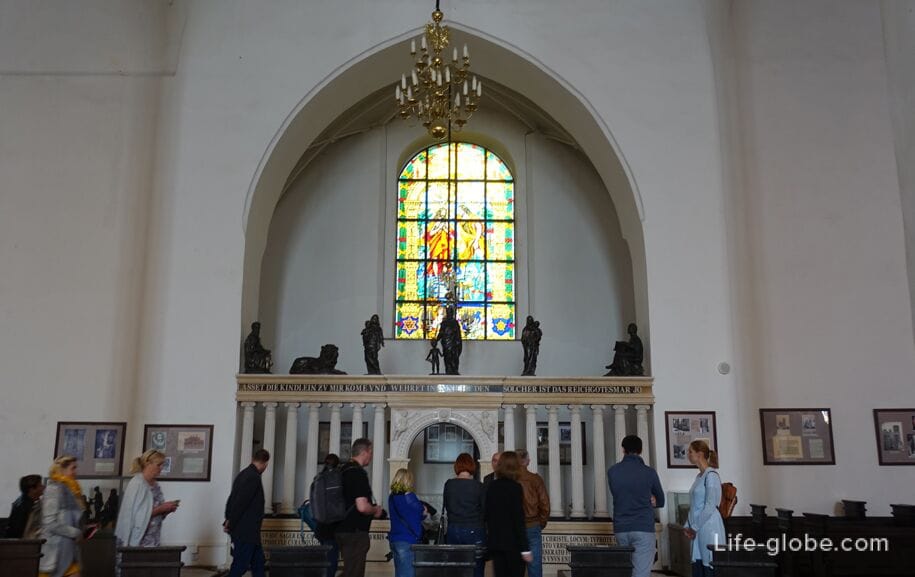
- fragments of the former structure of the cathedral;
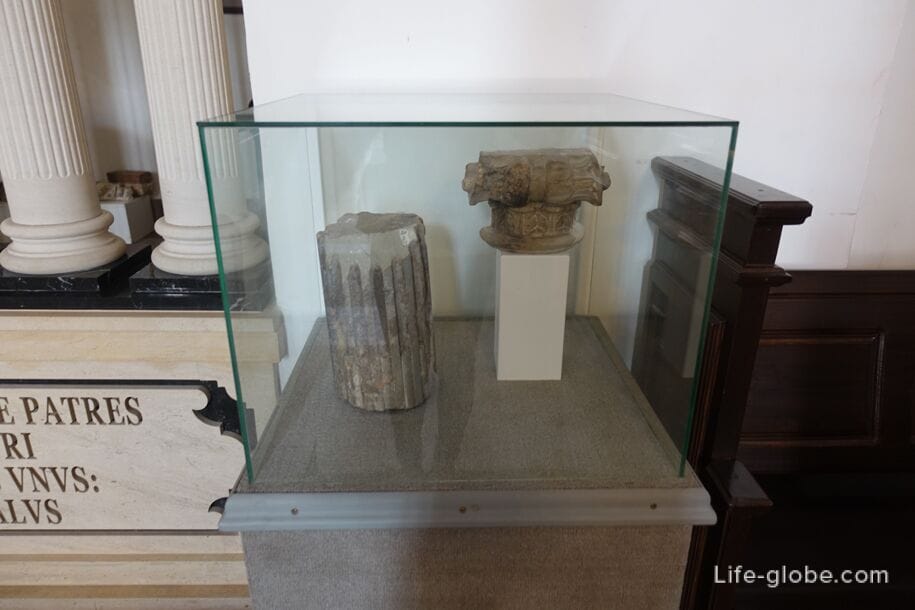
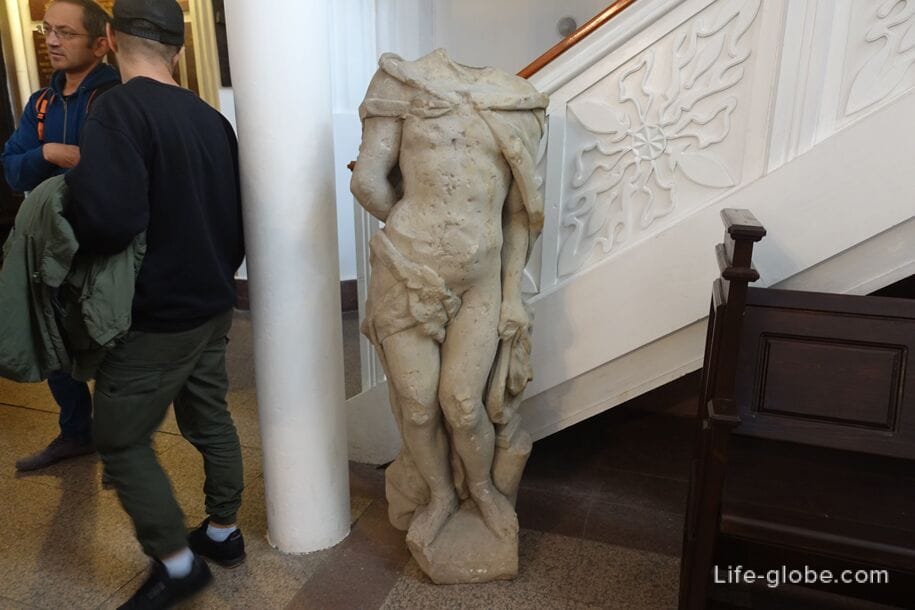
- the original ticket of the Konigberg Cathedral for one of the productions, dated April 3, 1944.
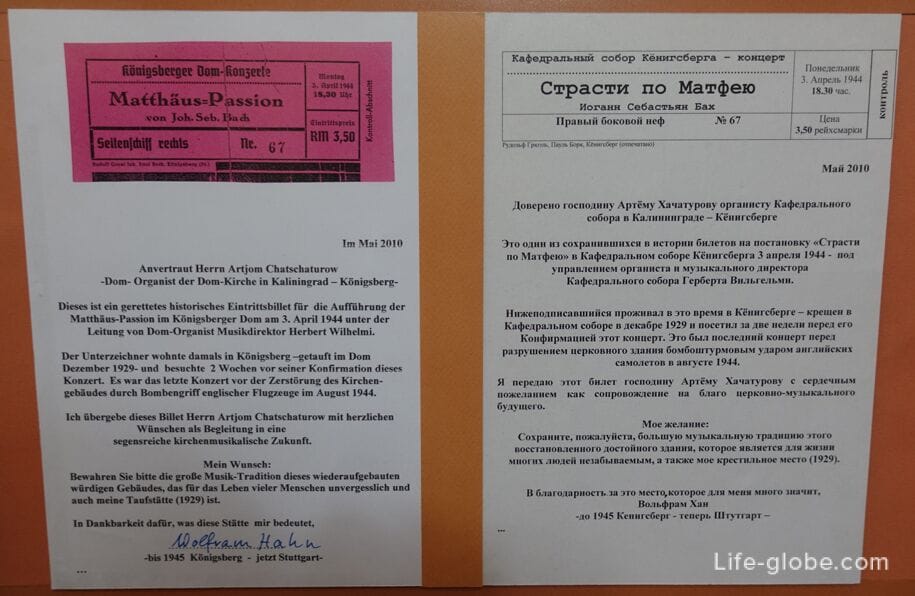
The former altar space of the cathedral now has three epitaphs.
The central part is occupied by the restored epitaph to Duke Albrecht the First.
During the Second World War, the tombstone was damaged in a fire. Then the cathedral was looted - gold and other valuables were searched. The statues from Albrecht's tombstone were sold out, and the epitaph was bricked up, painted over in places. In 2009, restoration work began on the largest epitaph preserved after the war. This 14-meter tombstone for the tomb of the first Duke of Prussia Albrecht is a monument by the outstanding Dutchman Cornelius Flores (1570).
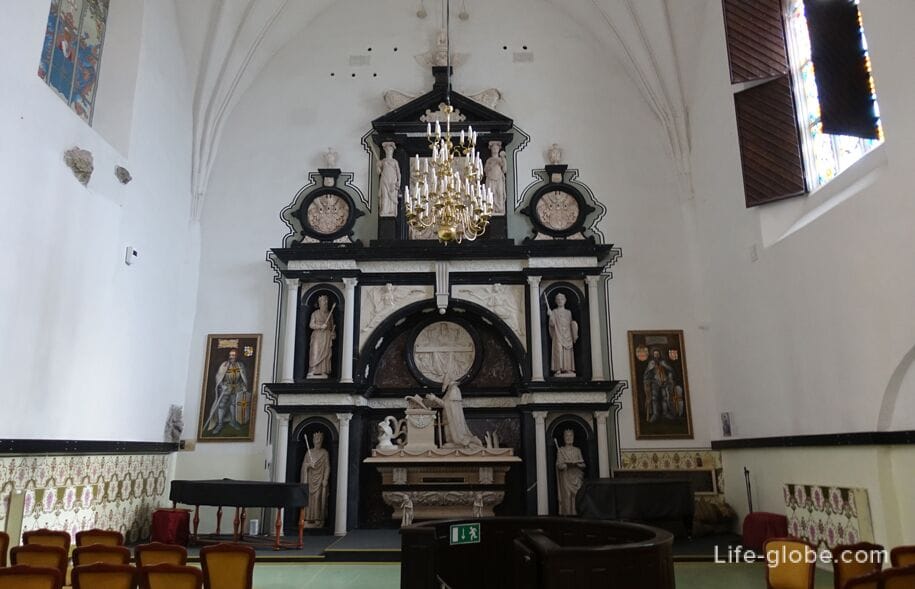
The lower part of the epitaph depicts sculptures of two boys with torches down, which symbolizes the end of earthly life and the beginning of the divine.
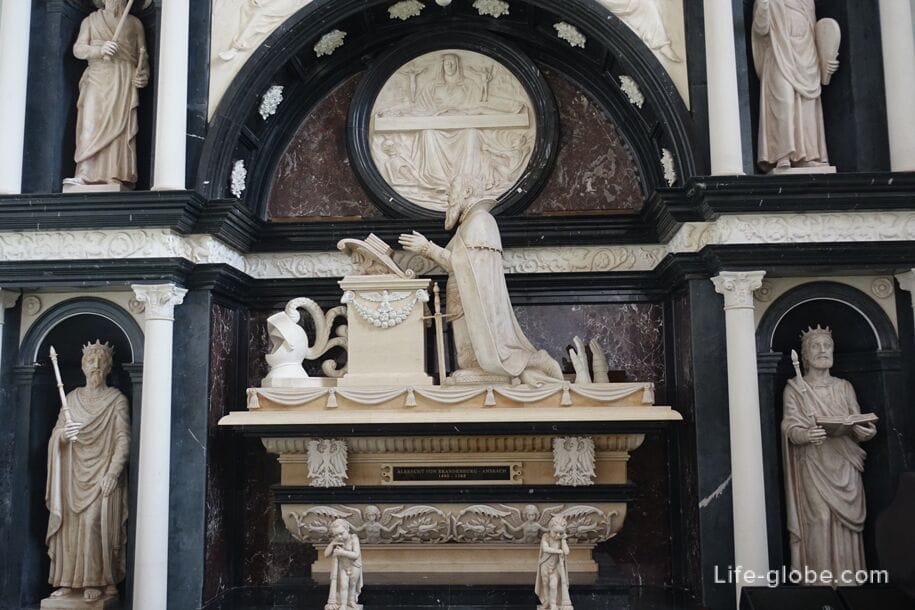
On the side walls are the epitaphs of the Duke's two wives - the first - Duchess Dorothea and the second Duke's wife - Anna Maria.
Although the epitaphs are not original, they are executed very skillfully, in compliance with all the elements.

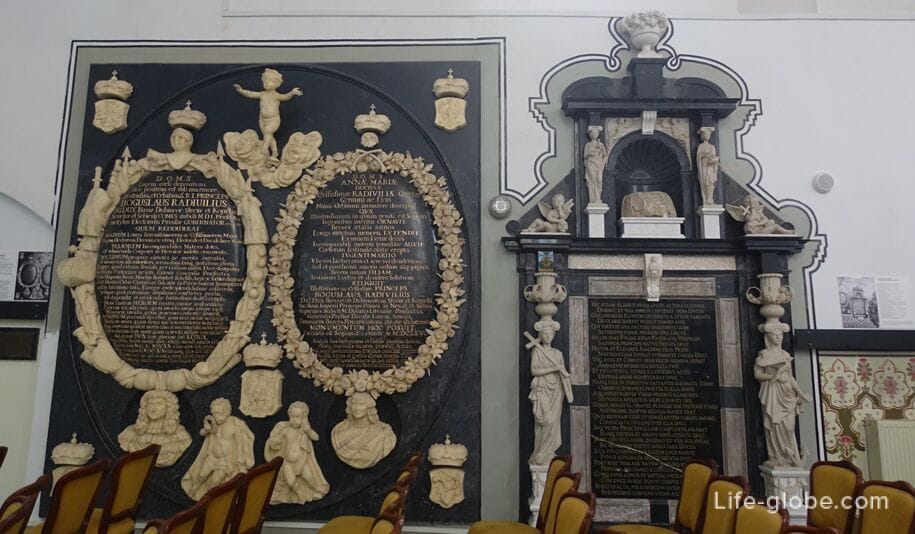

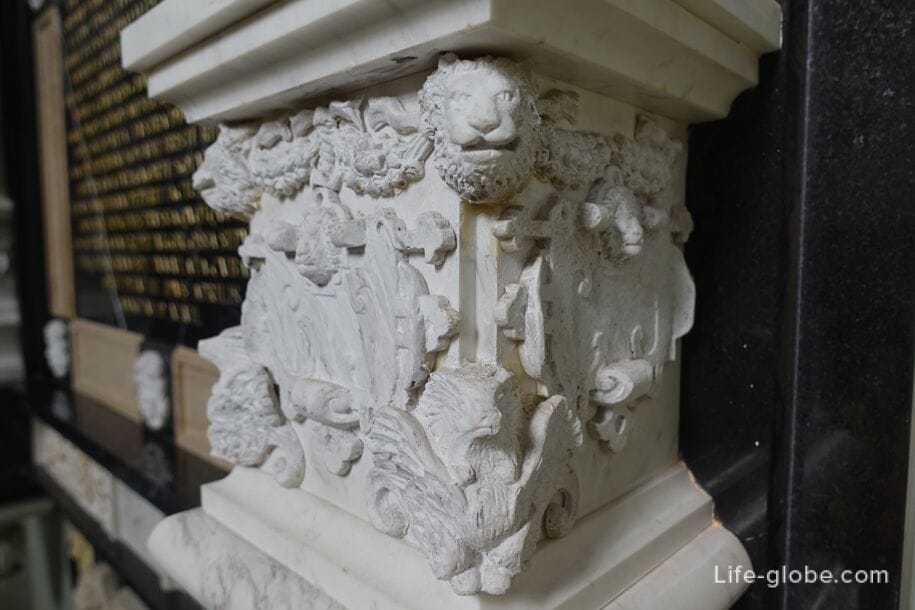
The Immanuel Kant Museum has several halls located on three floors of the Cathedral.
The museum's collection includes various exhibits related to the history of Konigsberg-Kaliningrad, as well as the life and scientific activities of the German philosopher Immanuel Kant.
A spiral staircase leads to the Cathedral Museum.
In the first hall of the museum there is a model of Konigsberg in 1937, the author is the artist-architect of the museum Albert Mikhailovich Dyryshchev.
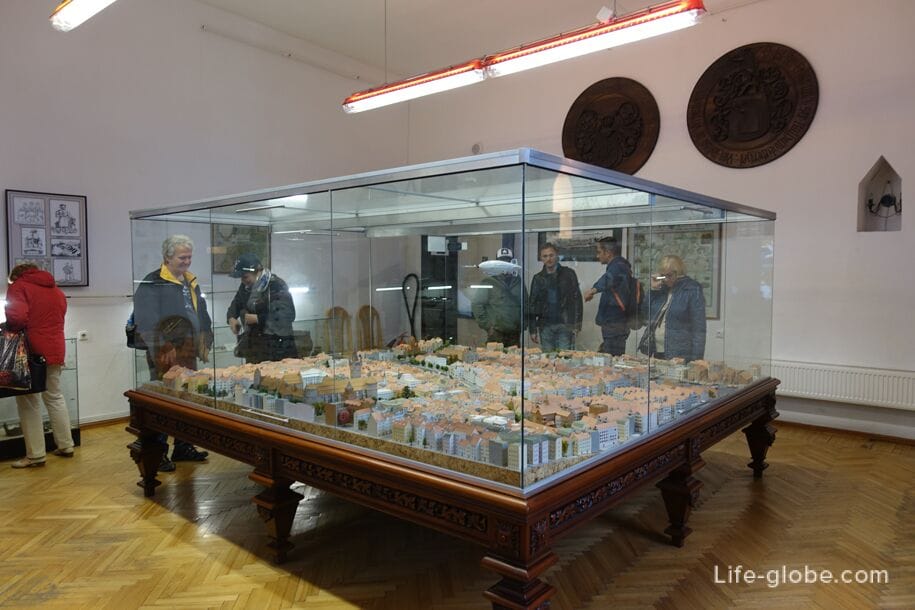
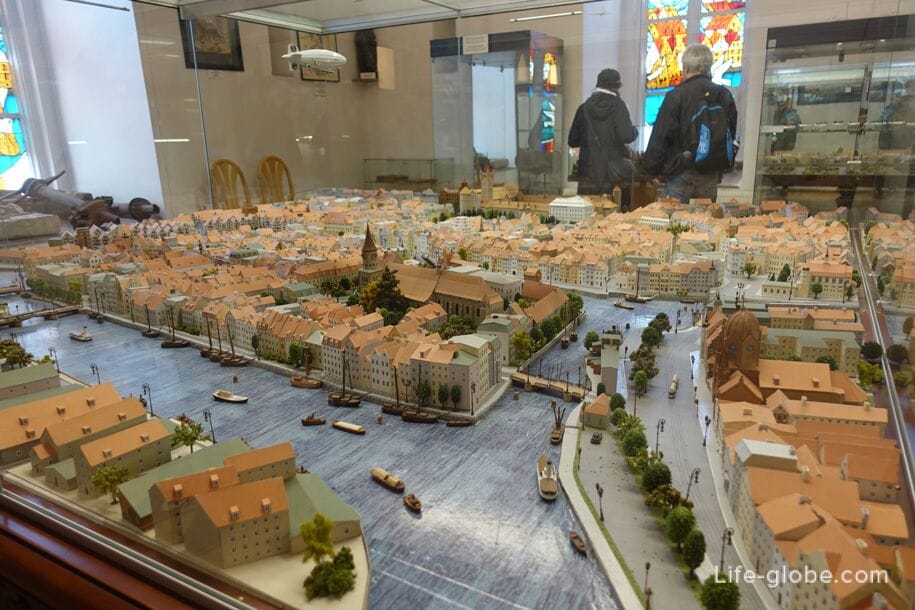
Also on the layout you can see the Royal Castle. The castle was damaged during the wars, and in Soviet times the remains of the ruins were demolished. Currently, only fragments of the dungeons remain of the castle, which can be seen on the square near the House of Soviets.
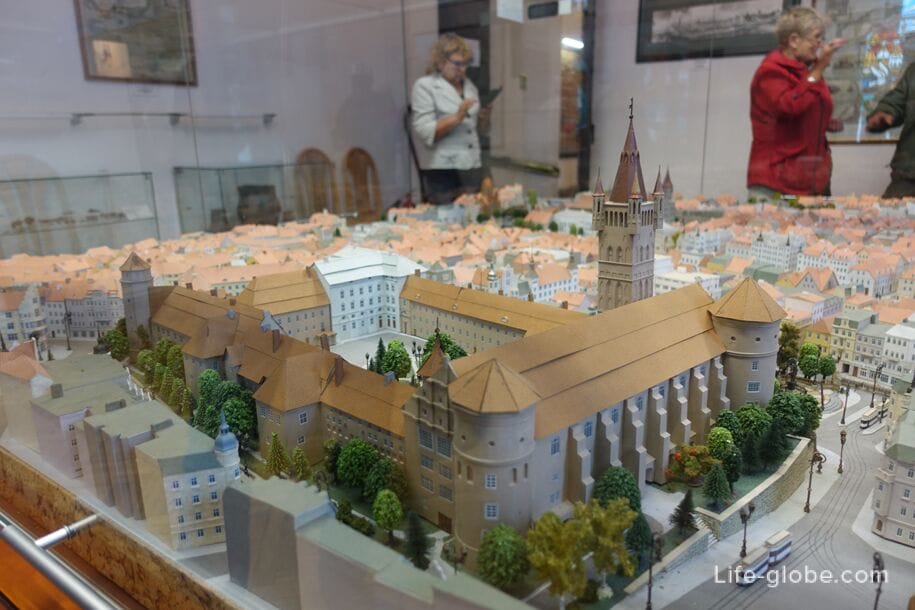
The second famous exhibit of the museum is the elements of the old tower clock of the Cathedral, discovered during the clearing of the cathedral territory in 1995.
Currently, on the main tower of the cathedral there is a clock made on the model of the Konigsberg clock. This is the most accurate clock in the city, the locals have been checking their watches by it for many years)).
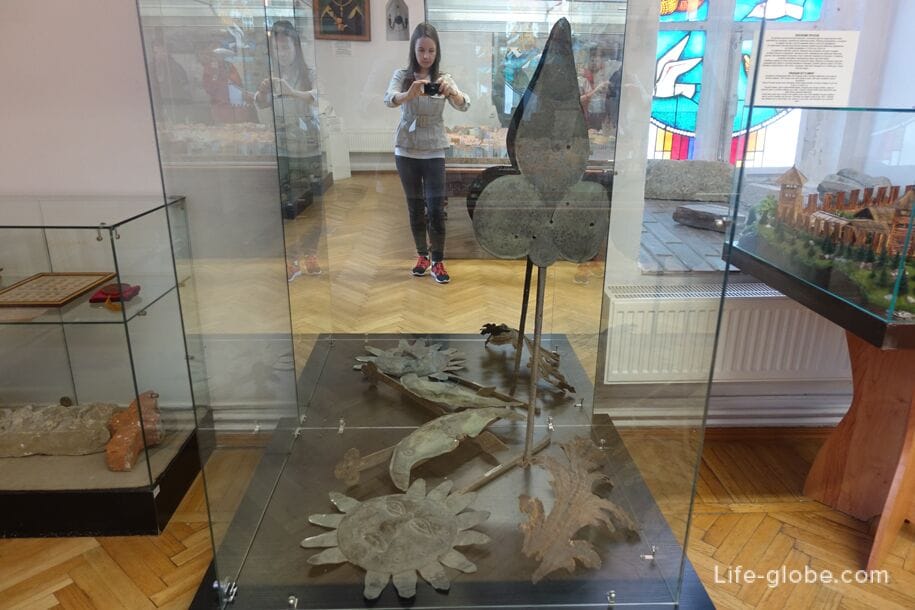
The robes of the members of the Teutonic Order of the House of the Holy Virgin Mary of Teutonia.
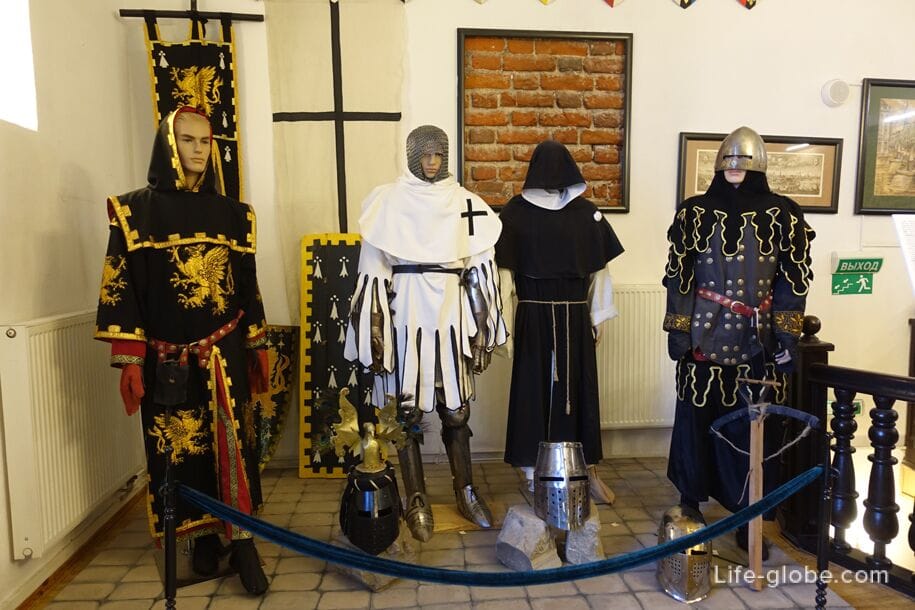
A hall dedicated to the visual history of the Cathedral. The photos show: the cathedral in the pre-war period, in the Soviet period and the progress of the restoration work of the cathedral.
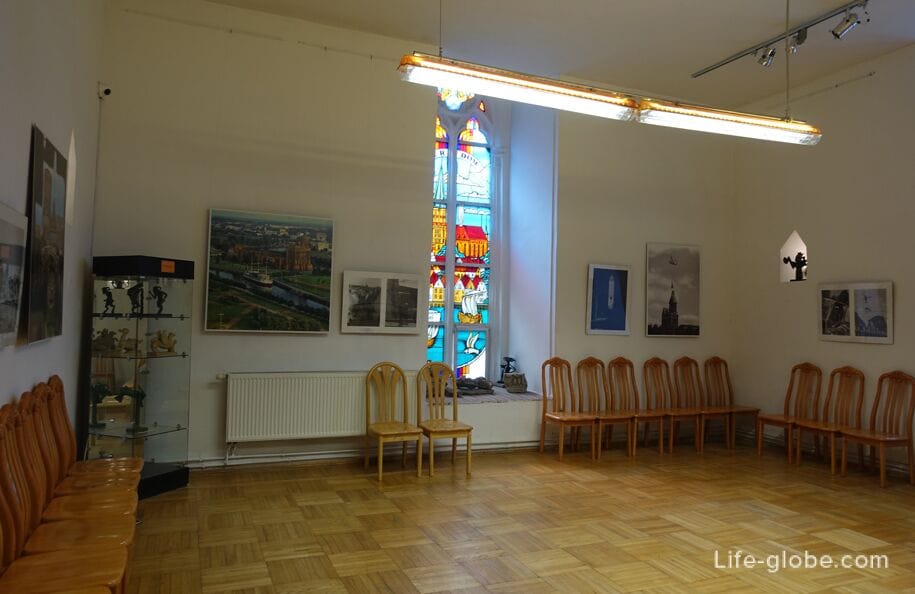
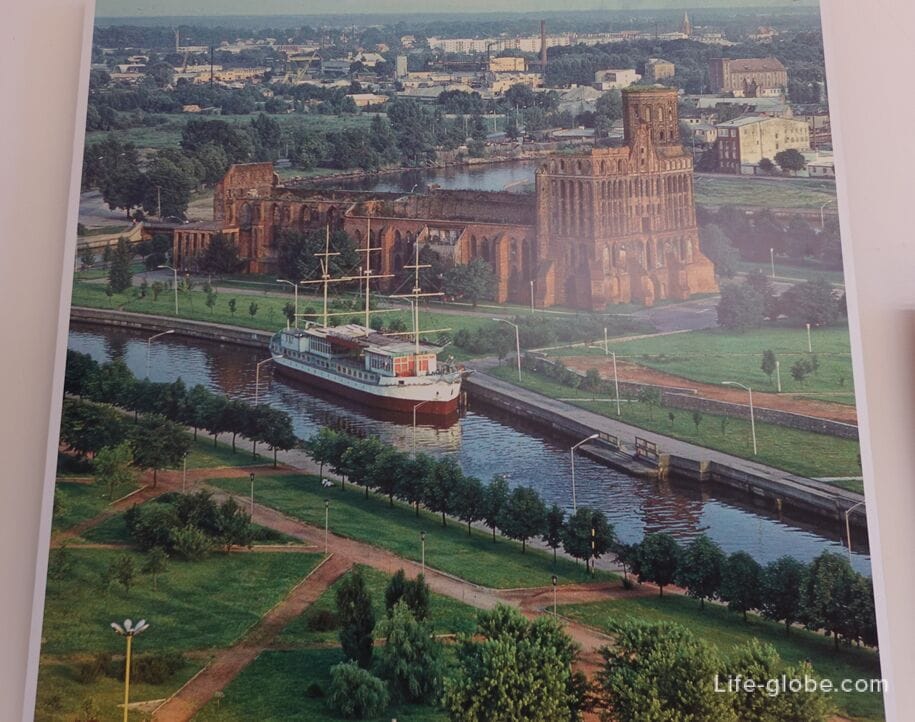
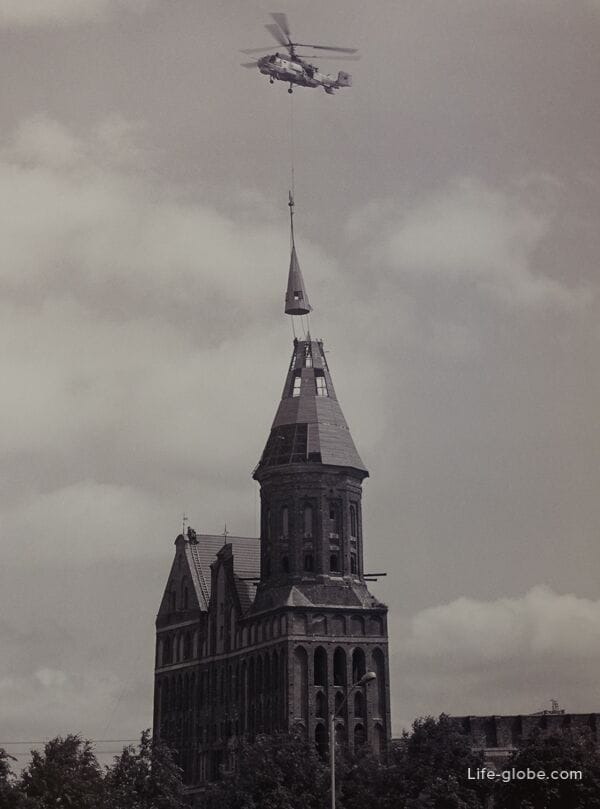
The Wallenrod Library occupies a special place in the museum. The library hall was completely recreated in 2005 with the help of photographs.
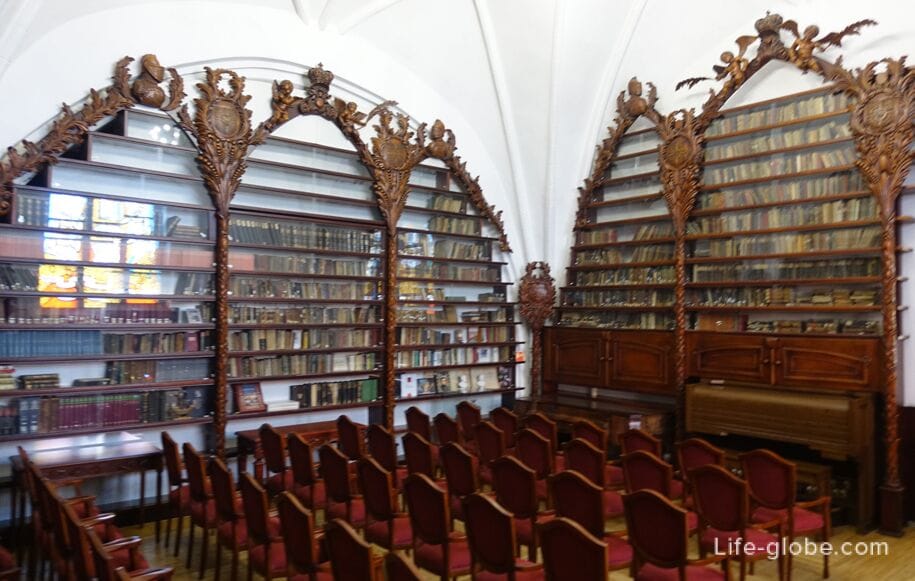
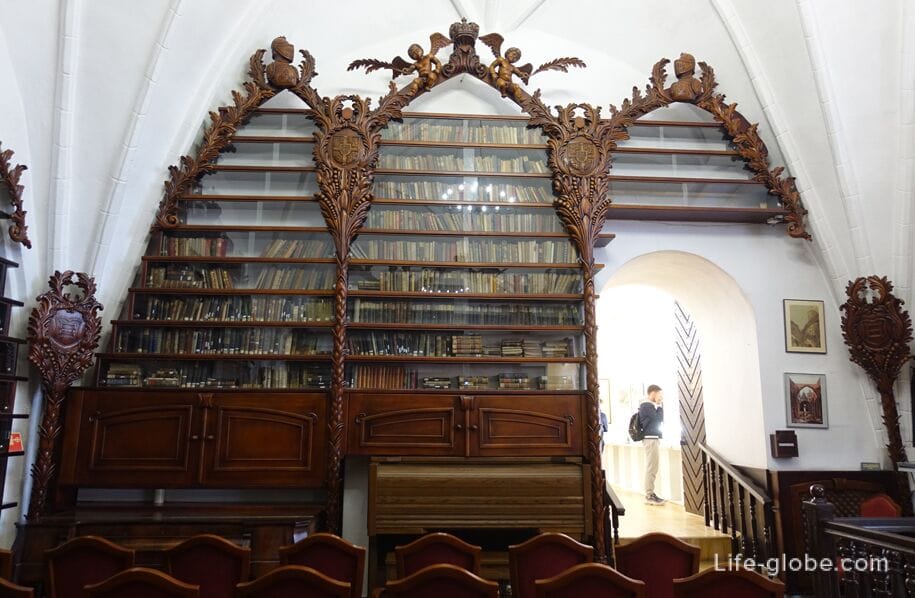
In the next hall there are also exhibits dedicated to the history of the cathedral and Kant. Of the most interesting:
- the recreated costume of Immanuel Kant. It should be noted that Kant was at that time still that fashionista;
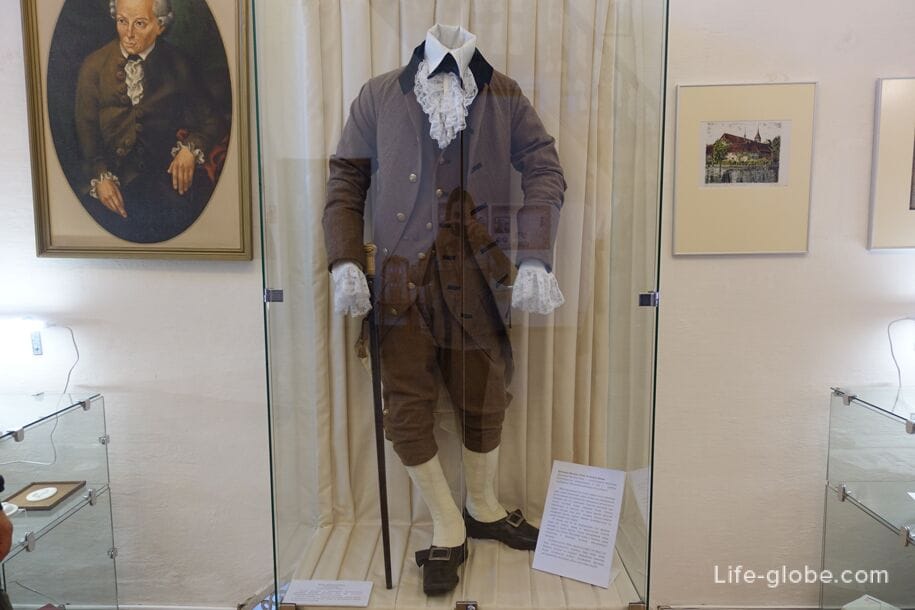
- portrait of Kant and the only color image on which you can see Kant sitting at the table;
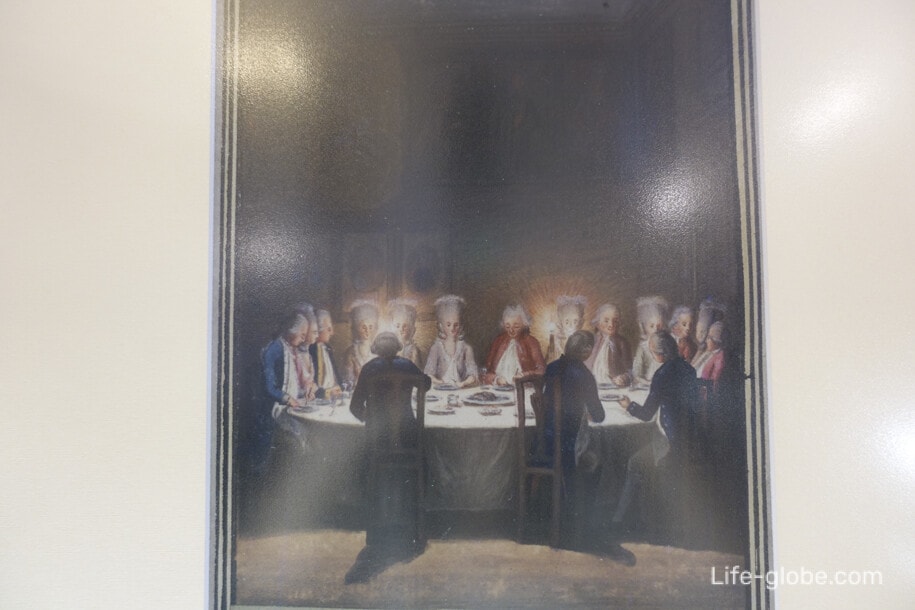
- a brief note dedicated to Countess Marion Hedda Ilse Denhof, who greatly assisted in the restoration of the Cathedral. 1 million 250 thousand German marks were spent on the construction of the roof of the cathedral;
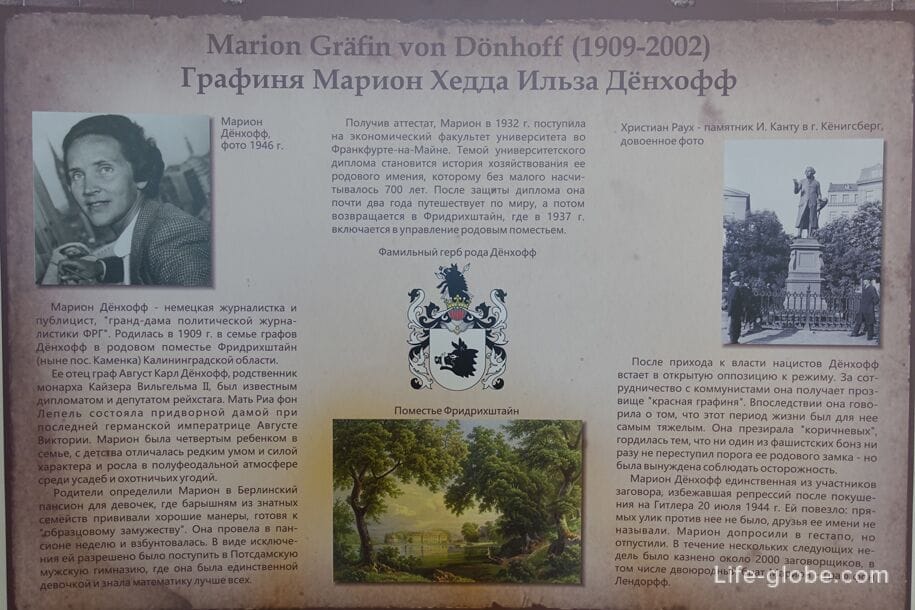

The painting "Kant in a circle of friends", master N. Frolov 1998, a copy made from an illustration by E. Derstling 1804.
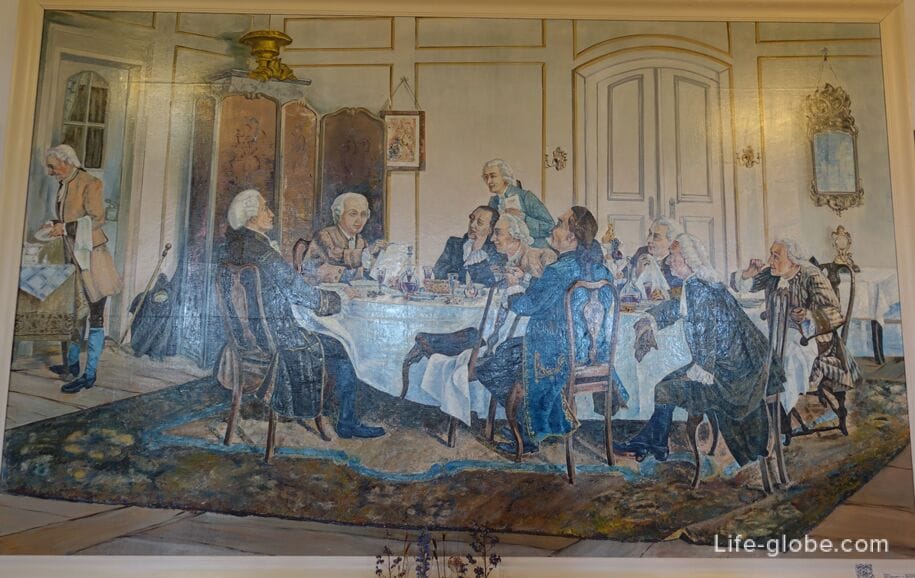
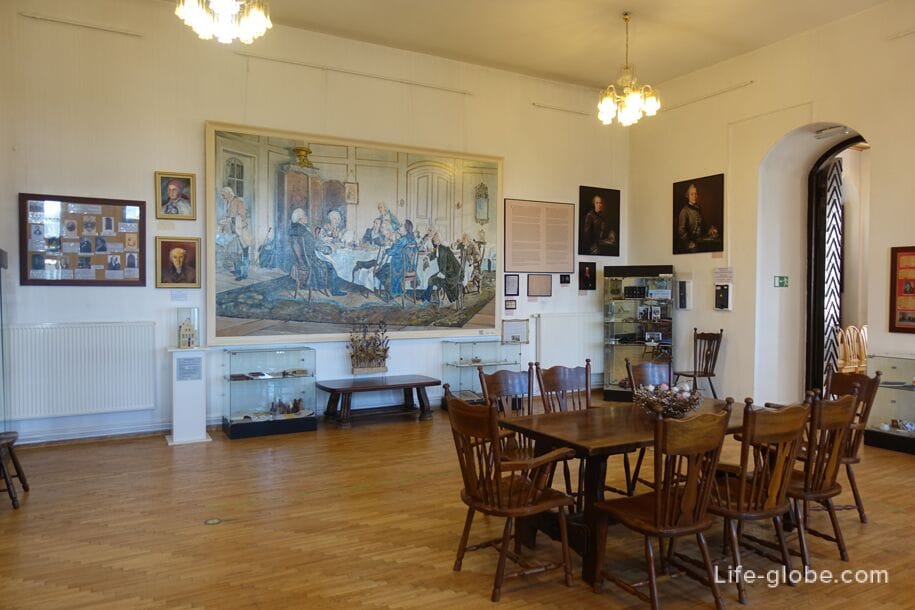
In the memorial hall of the museum there is a copy of Kant's death mask. According to one version, the copy was removed from the original.

Photo of the Kant Museum
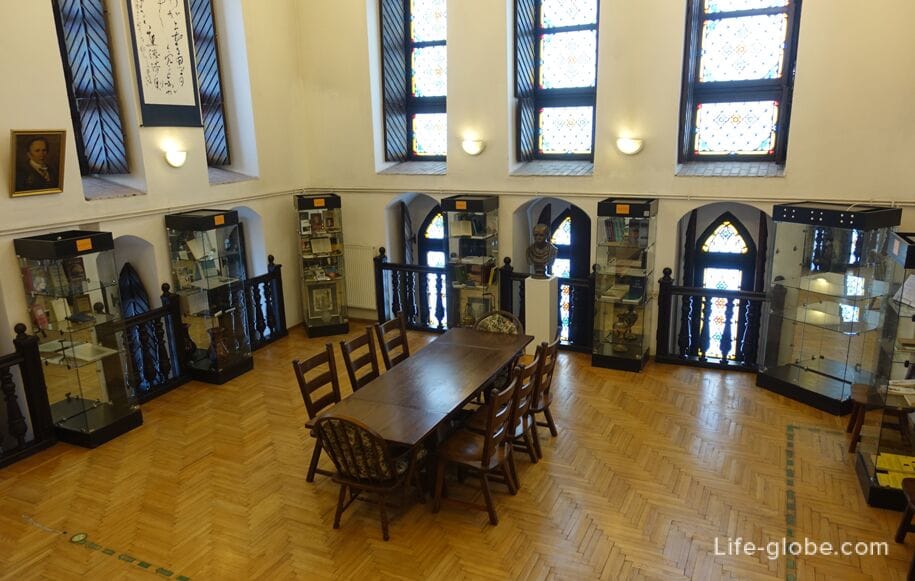

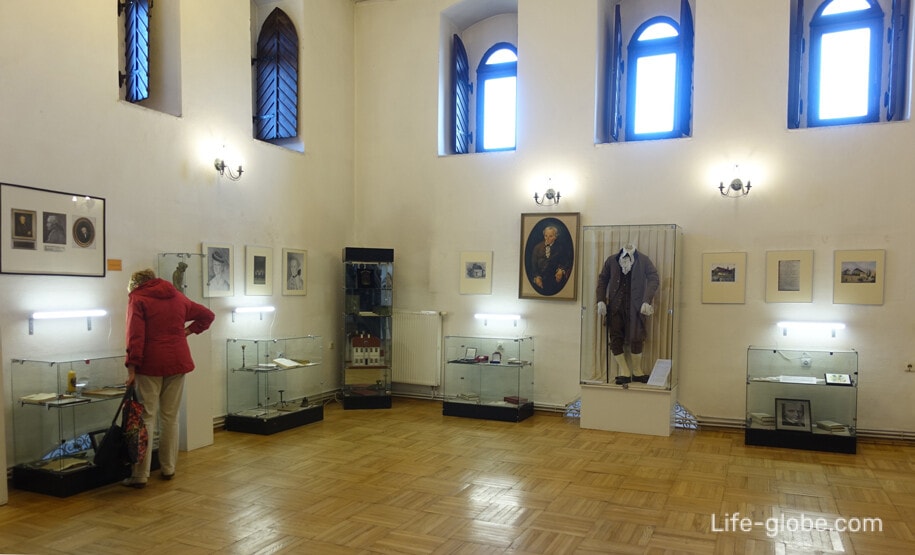
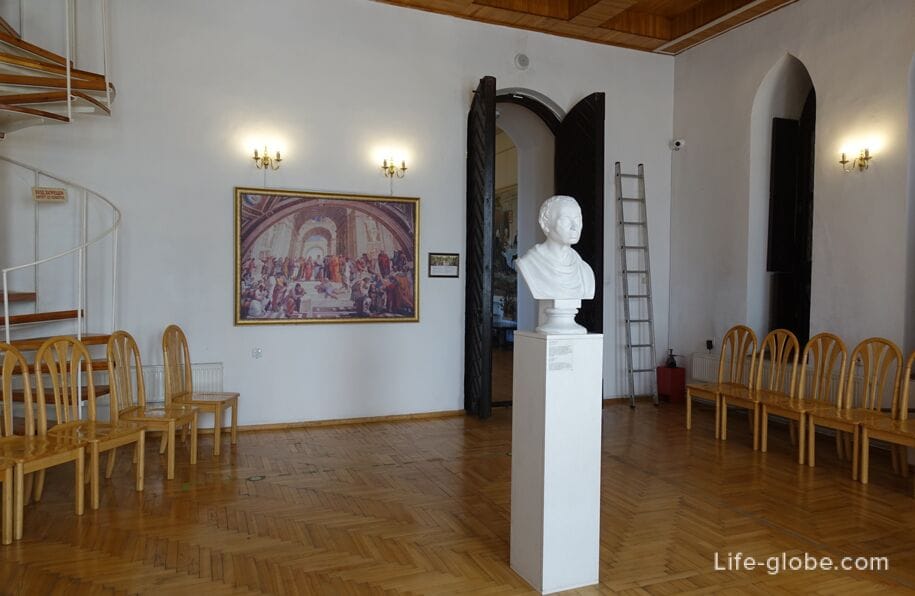
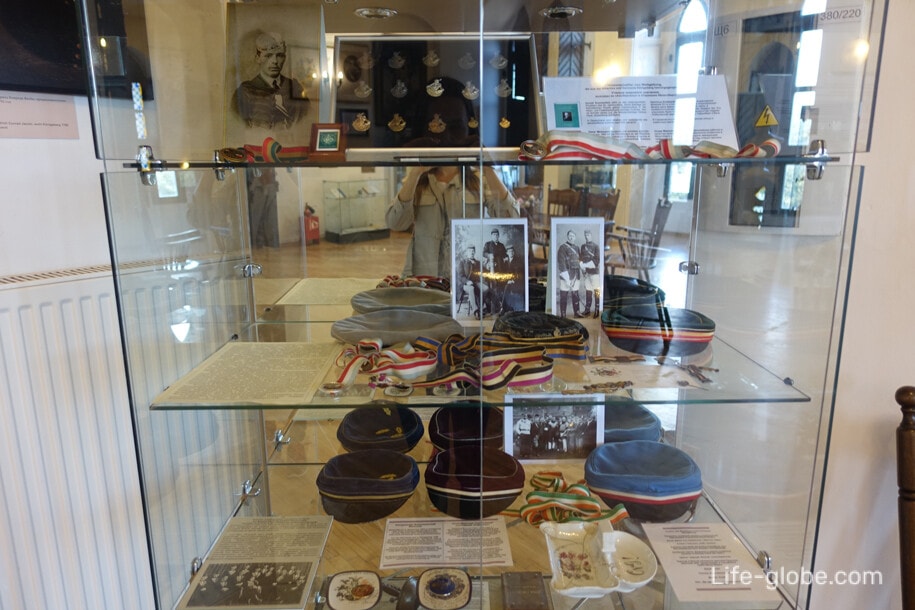
With a separate tour, you can get "behind the scenes" of the Cathedral.
The ascent takes place on a narrow spiral staircase
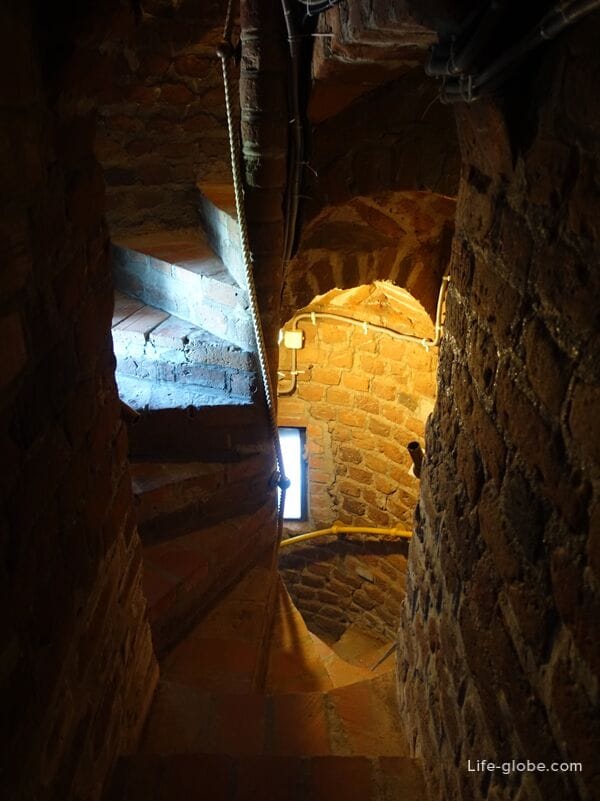
Then, bending down and entering a small door, you get into the "holy of holies" - the creative workshop of the artist-restorer, in which you see how and where the master works, as well as photos from which the masters recreate the "souls of past years".

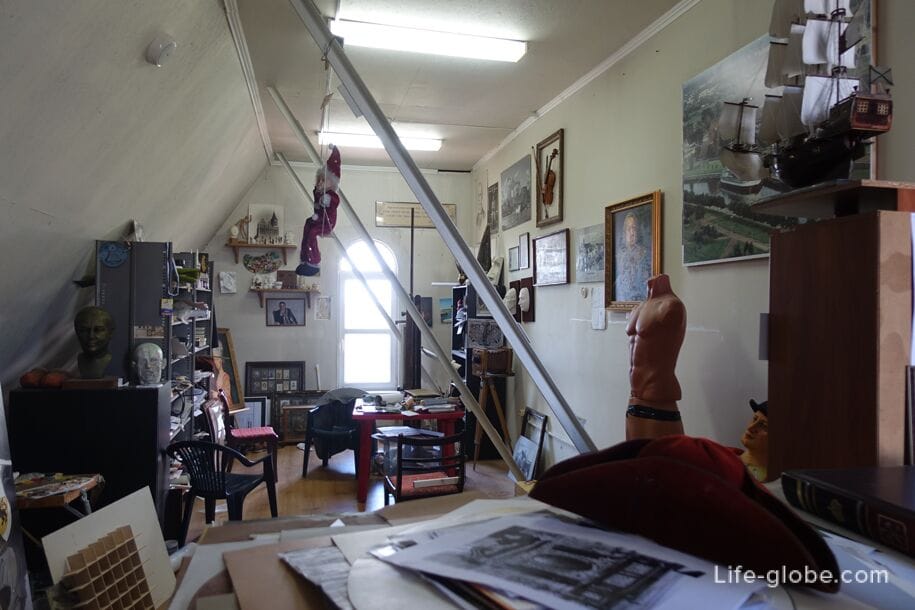
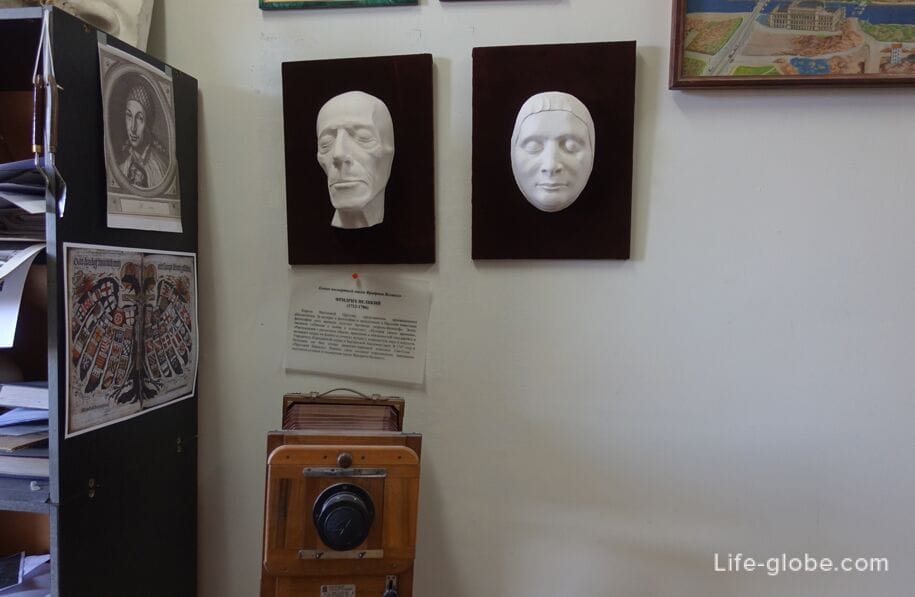
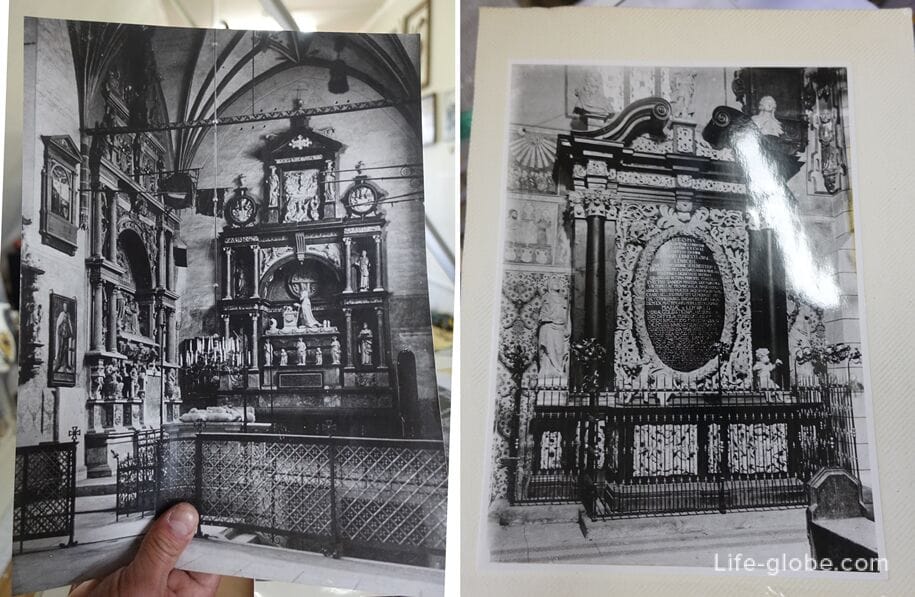
The photo shows the death mask of Immanuel Kant. Perhaps it was from her that a copy was made, which can be seen in the memorial hall of the Cathedral Museum.
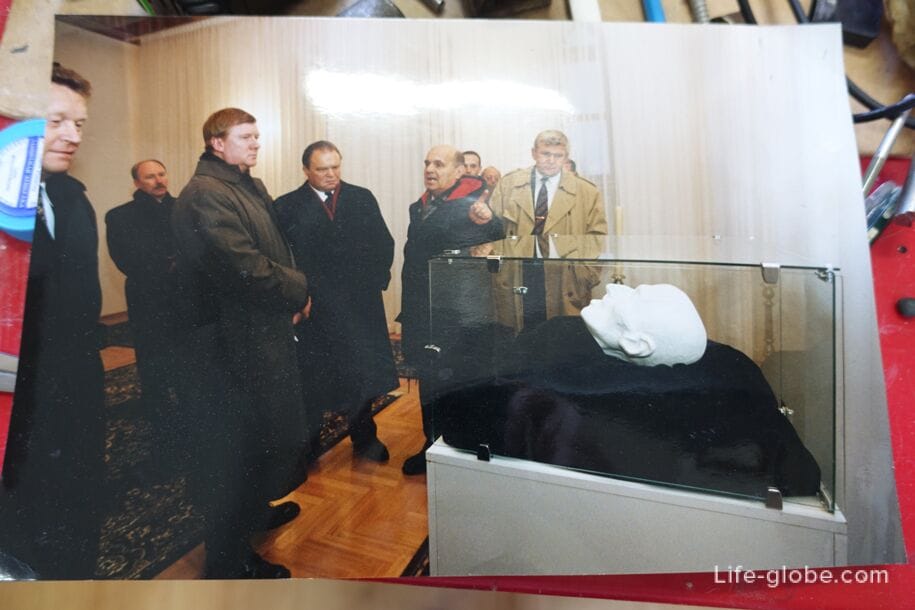
The first image of Konigsberg in color. Also, this image can be seen in the Museum of Fine Arts, located in the old building of the former Konigsberg Trading Exchange, near Kanta Island.
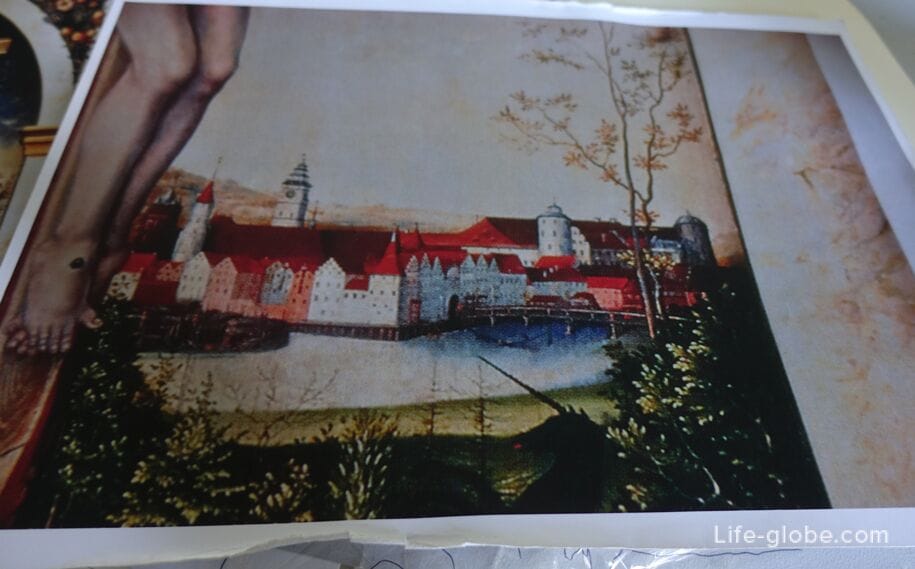
In one of the towers of the cathedral, a green light lights up every evening. The daily lighting of the green "fire" was the posthumous wish of the youngest son of Duke Albert the Great - Luther of Brunswick.

On the outer walls of the cathedral, a kestrel (a bird from the falcon-like family of falcons) nests annually. This bird, although small in size, is predatory. Employees of the cathedral have repeatedly seen birds feeding on mice and other small prey on the outer cornices of the windows of the upper floors of the cathedral.

The passage to the roof is closed to visitors. From the roof of the Cathedral there are unreal beauty panoramic views of the part of the island of Kanta,The Fish Village, the Pregolya River and the surrounding area.

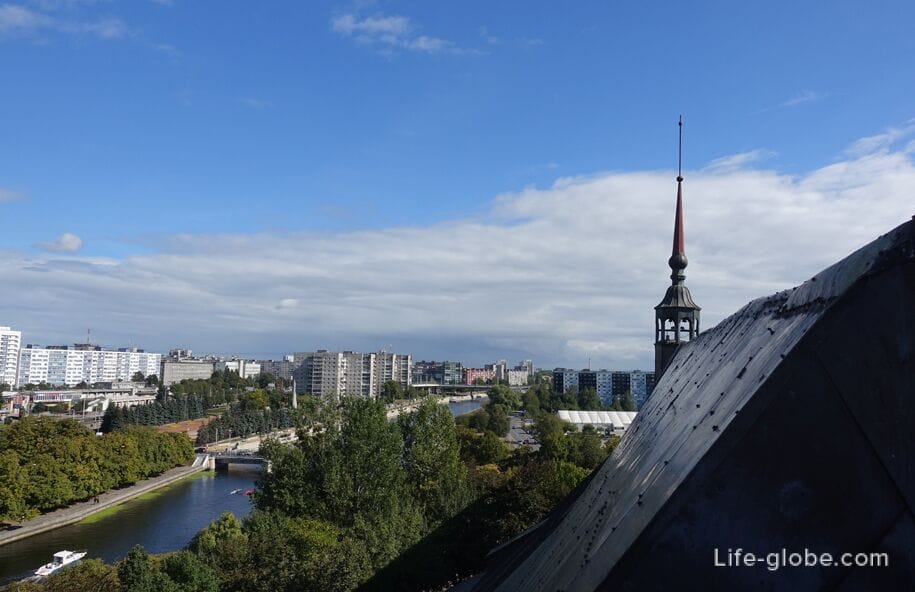

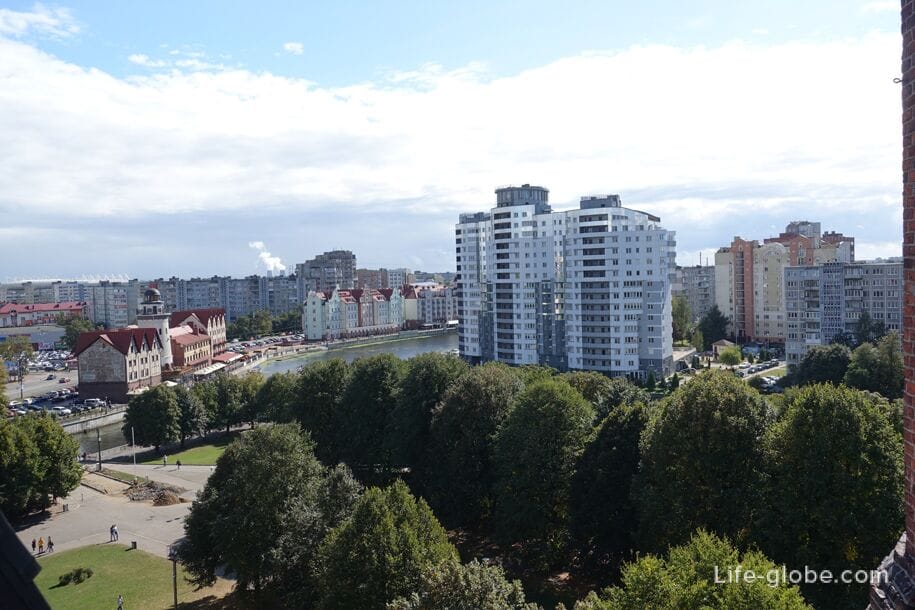
At the entrance to the cathedral there are chapels on both sides - a small chapel of the Holy Great Martyr Healer Pantelimon and the Evangelical Lutheran Church.
Photos of the chapel
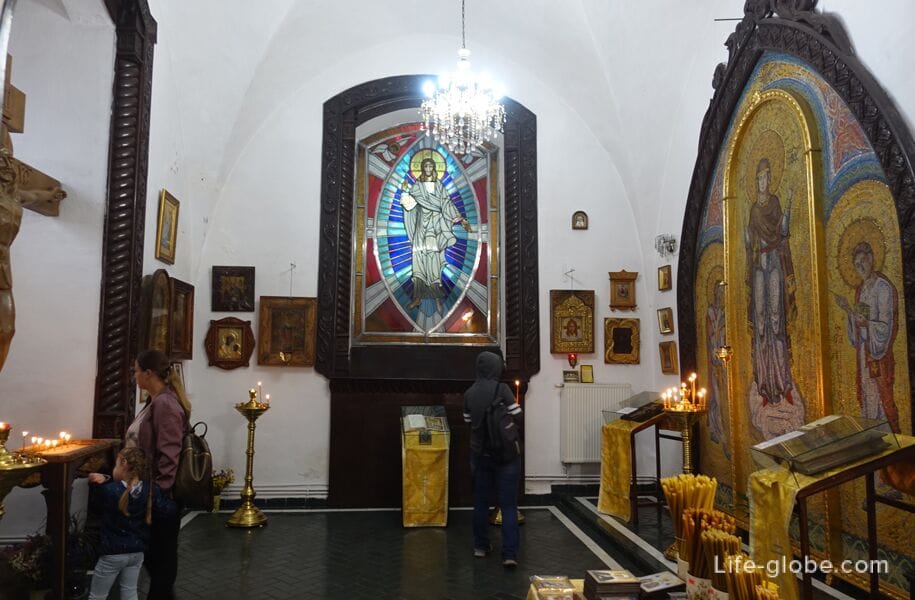
Photo of the Lutheran Church
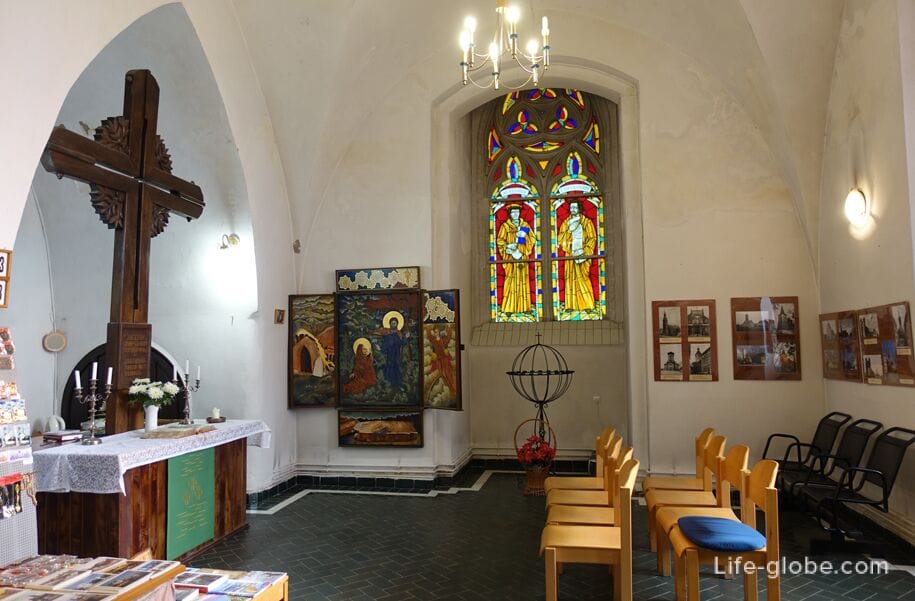
Near the entrance to the concert hall there are two stone sculptures of bears holding shields with the image of the Kneiphof coat of arms in their paws. Previously, sculptures of these bears were located on the stairs of the Kneiphof Town Hall and miraculously survived during World War II, when the town hall was destroyed.
The bears were subsidized in 1697, this is the oldest city sculpture. Made by master Jonas.
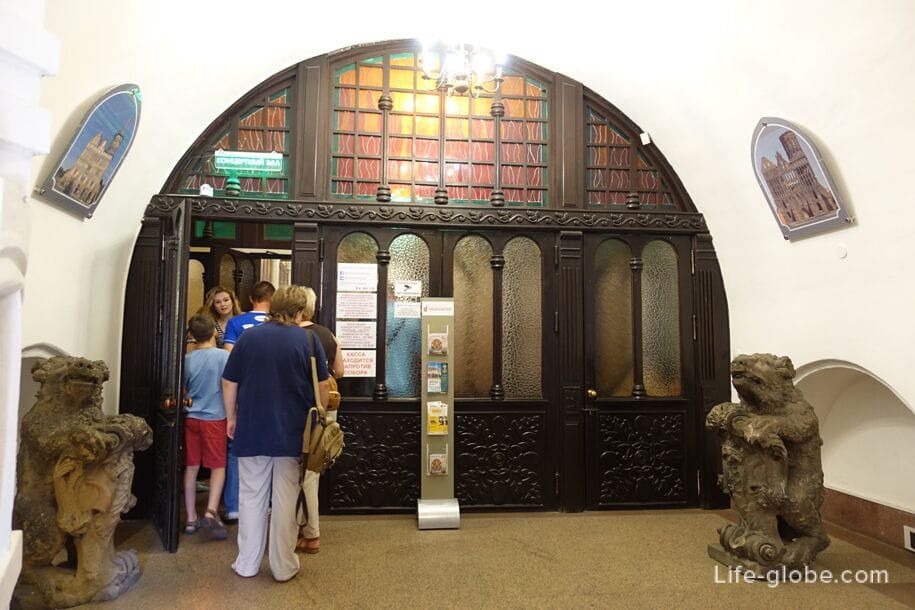
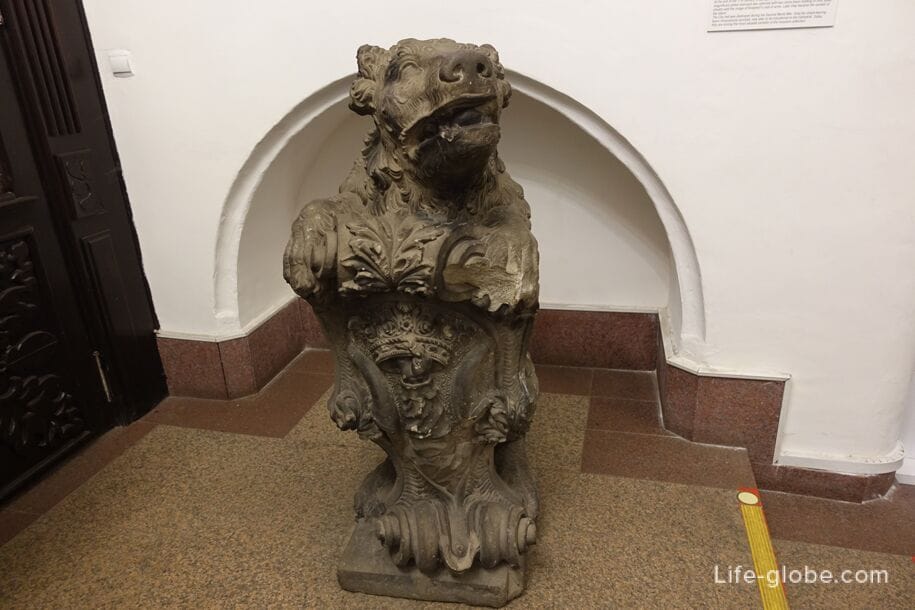

The address of the Cathedral: the cathedral is located on the island of Kant, at the address: Kant Street, 1, Kaliningrad.
Concerts, museum and excursions in the cathedral: concerts are held in the cathedral, including organ mini-concerts, author's excursions, quest.
You can find out the cost, as well as the schedule of events held in the Cathedral, both at the ticket offices located directly near the main entrance to the cathedral, and on the official website of the cathedral.
Tickets can be purchased at the ticket offices of the cathedral.
The official website of the Cathedral in Kaliningrad: sobor-kaliningrad
In addition to the cathedral itself, there are: Honey Bridge connecting the island with the Fishing Village, Kant's grave and sculpture park, as well as monuments and a miniature composition "Symbols of Konigsberg 1930". Learn more about Kant Island in Kaliningrad...
